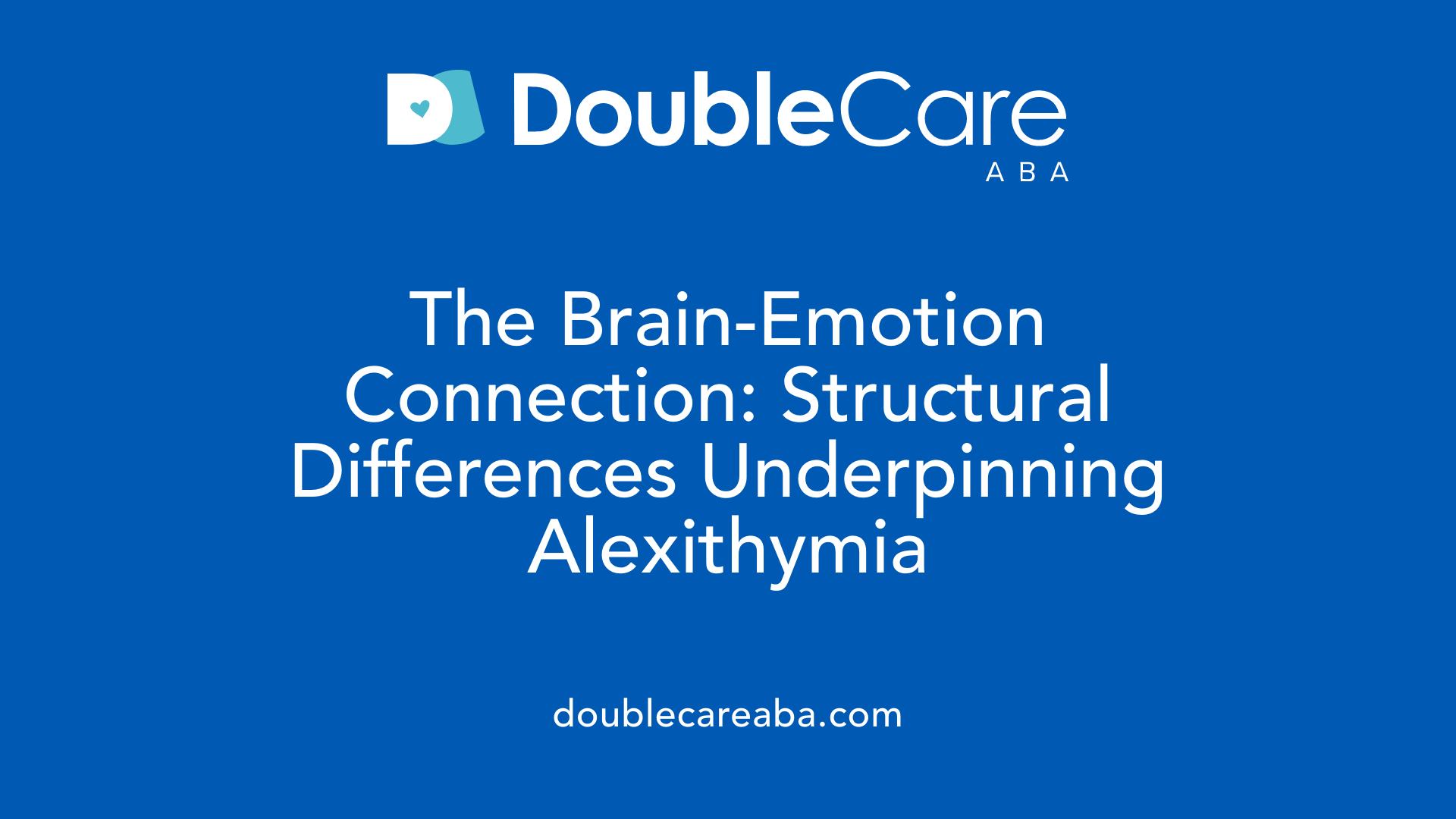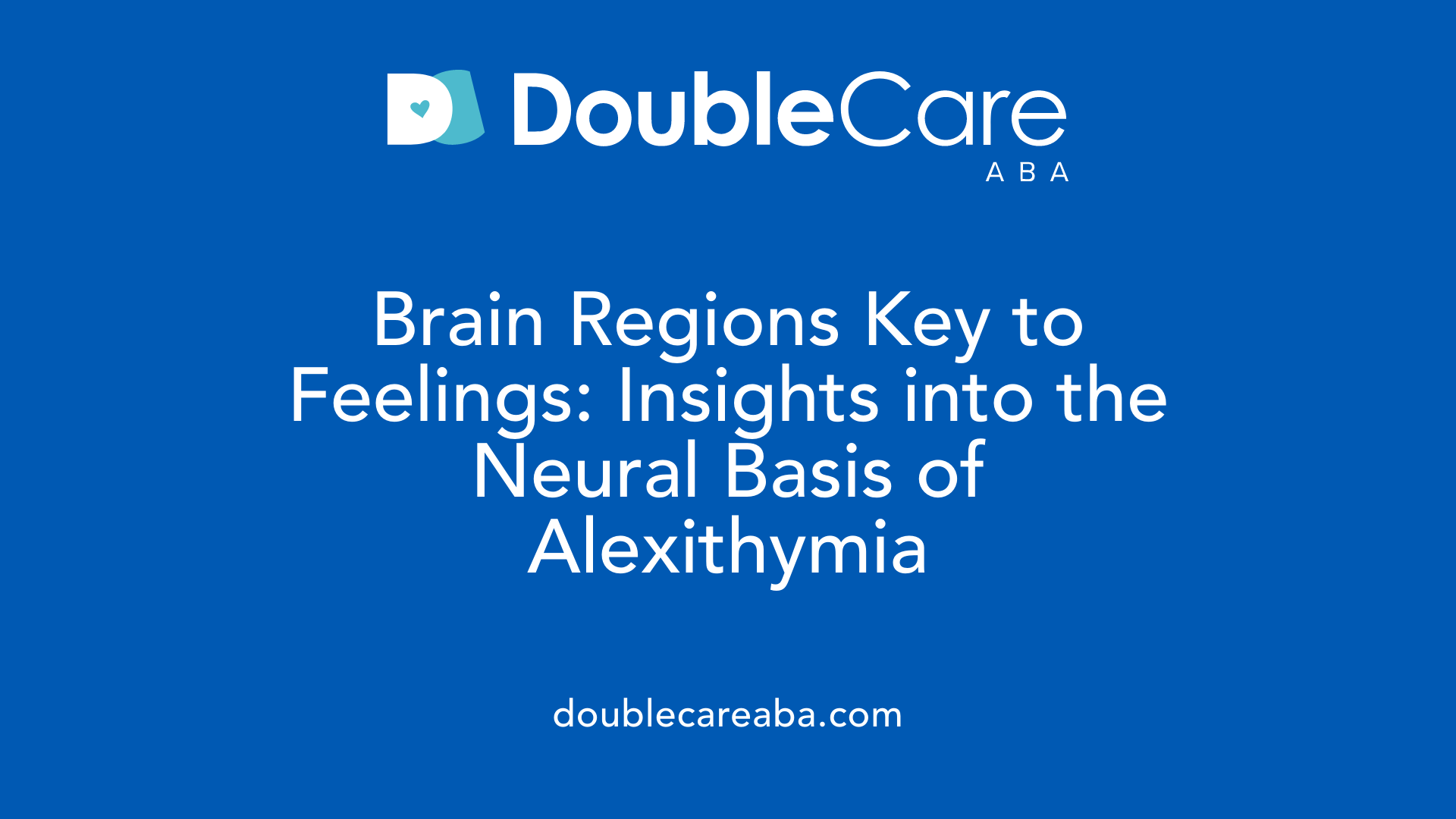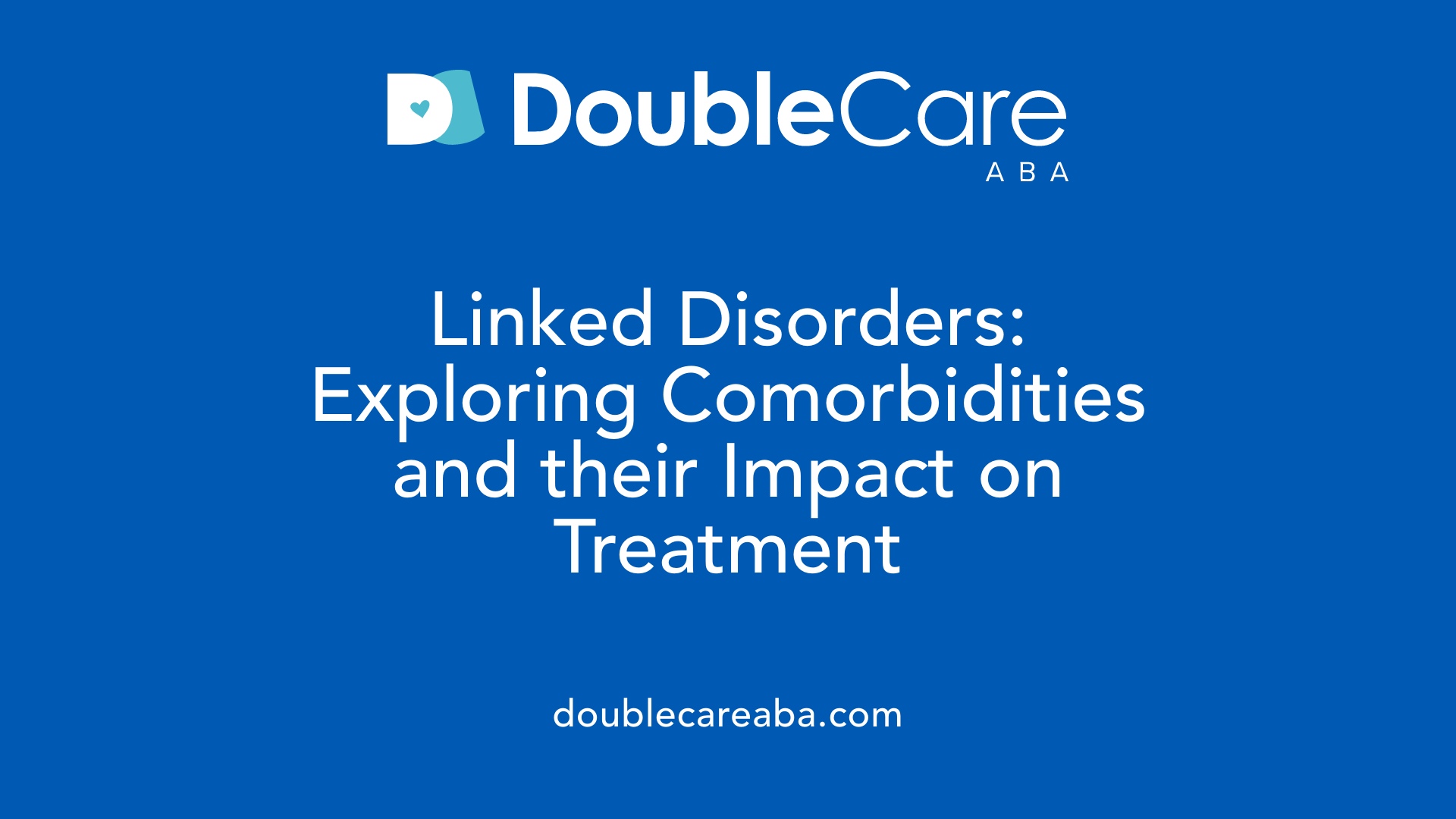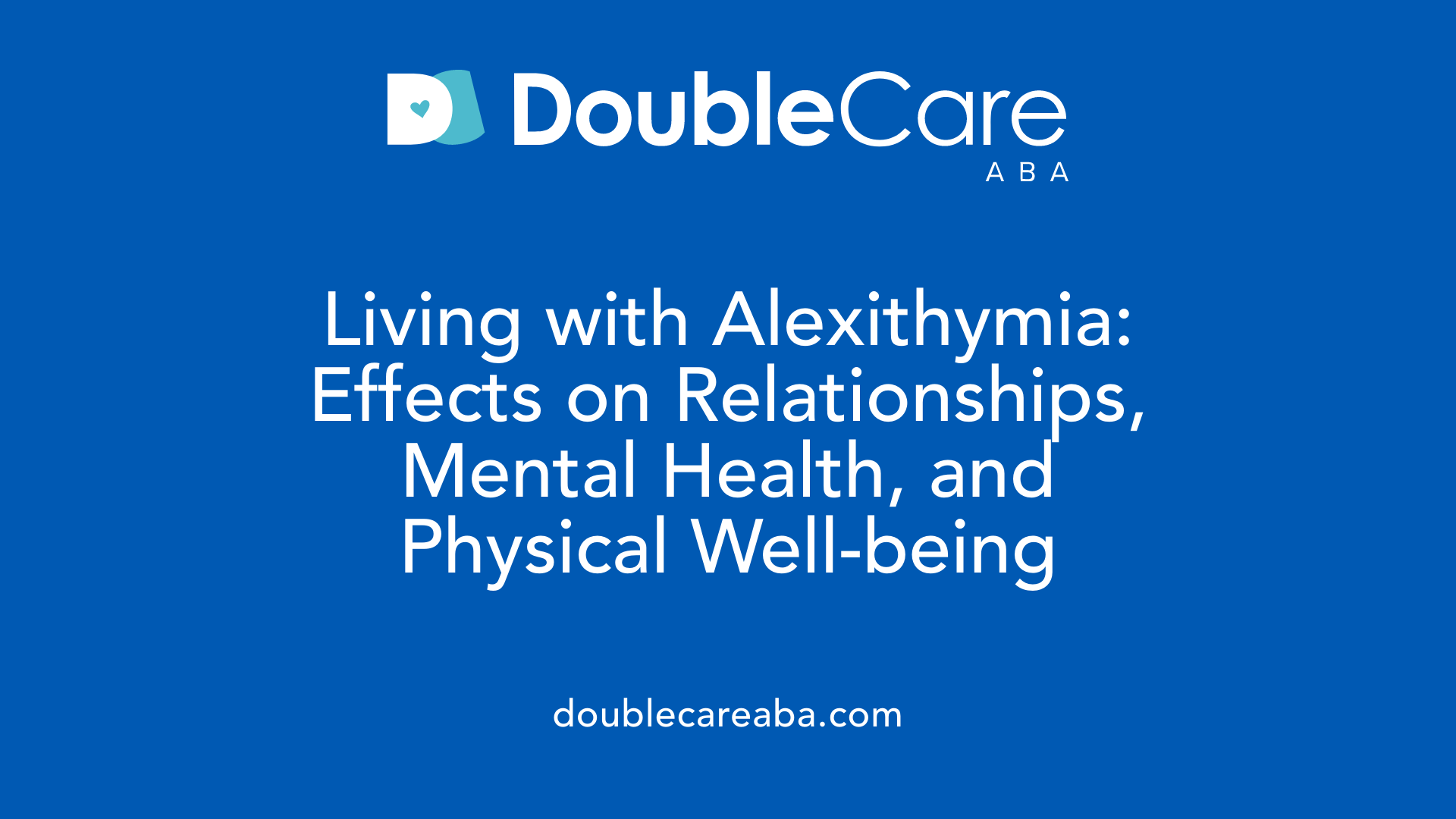Alexithymia: Causes, Symptoms & Treatments
Understanding the Emotional Landscape: An Insight into Alexithymia

Introduction to Alexithymia
Alexithymia is a complex psychological trait characterized by difficulties in recognizing, understanding, and expressing one’s own emotions. This condition, often misunderstood, influences not only individual emotional health but also impacts social interactions, relationships, and overall quality of life. As a construct linked to various neurological and psychiatric conditions, understanding the nuances of alexithymia can help demystify its causes, symptoms, and potential interventions.
What is Alexithymia and Why It Matters

What is alexithymia?
Alexithymia is a neuropsychological trait marked by difficulties in recognizing, understanding, describing, and expressing emotions. It often manifests as challenges in emotional awareness and interoception—the ability to sense internal bodily signals linked to emotions. People with alexithymia may struggle to distinguish between emotional states and physical sensations, which can impair social interactions and relationships.
The term 'alexithymia' comes from Greek roots meaning 'lack of words for emotion.' Although it is not classified as a mental health disorder, it is considered a personality trait or cognitive style that influences how individuals process emotions.
Research indicates a strong connection between alexithymia and various psychiatric and neurological conditions. For example, about half of individuals with autism spectrum disorder (ASD) also exhibit alexithymia, which might explain the perceived lack of empathy common in autism. It is also frequently linked with depression, PTSD, schizophrenia, and neurological diseases such as Parkinson’s or stroke.
Structural brain differences underpin many cases of alexithymia, notably alterations in regions involved in emotional regulation—like the insula and the anterior cingulate cortex. These abnormalities can affect the neural pathways responsible for emotional processing.
What are the symptoms of alexithymia?
Symptoms primarily involve difficulties in identifying and differentiating emotions, both in oneself and others. Individuals often find it hard to recognize feelings or interpret facial cues, leading to challenges in social settings.
Common signs include:
- Trouble pinpointing emotions
- Limited capacity to describe feelings verbally
- Focus on external details rather than internal experiences
- a tendency to speak factually about external events without emotional context
- Emotional blunting or detachment
- Physical complaints like headaches, fatigue, or tension linked to emotional distress
Many also report a reduced imagination or fantasy life and may appear distant or humorless. These symptoms can hinder relationships and may co-occur with depression, anxiety, or neurological disorders, complicating mental health management.
What are the causes of alexithymia?
The origins of alexithymia are complex and involve a combination of genetic, neurological, and environmental factors. Evidence suggests that genetics contribute, especially concerning neurodevelopmental aspects seen in autism spectrum disorder.
Neurological causes include structural or functional changes in key brain areas such as:
- The insula, involved in bodily awareness
- The anterior cingulate cortex, critical for emotional regulation
- The right hemisphere of the brain, which helps process emotions
Environmental influences play a role as well. Adverse childhood experiences, emotional neglect, trauma, or chronic stress can contribute to the development of alexithymia. Early life factors like emotional unavailability or lack of bonding may hinder emotional skill development.
Additionally, neurological conditions like Parkinson's disease, traumatic brain injury, and stroke have been associated with acquired forms of alexithymia, indicating that brain damage can directly impact emotional processing capabilities.
How is alexithymia diagnosed?
While not a formal psychiatric diagnosis, alexithymia is assessed through clinical tools and questionnaires by mental health professionals. The most common instrument is the Toronto Alexithymia Scale (TAS-20), a 20-item self-report questionnaire that evaluates:
- Difficulty identifying feelings
- Difficulty describing feelings
- Externally-oriented thinking
Other tools include the Bermond–Vorst Alexithymia Questionnaire (BVAQ) and the Observer Alexithymia Scale (OAS). These tools help clinicians gauge the severity of alexithymic traits and inform treatment planning.
Neuroimaging techniques, like MRI scans, can observe structural variations in brain areas involved in emotion, providing additional research insights but are not routine diagnostic methods.
Are there treatments available for alexithymia?
Currently, there are no specific cures for alexithymia. Nonetheless, various therapies can help individuals improve their emotional recognition and regulation skills.
Psychotherapeutic approaches such as cognitive-behavioral therapy (CBT), emotion-focused therapy (EFT), and psychodynamic therapy have shown positive effects. These therapies often involve exercises to enhance emotional awareness, identify emotions, and connect physical sensations with feelings.
Additional supportive strategies include mindfulness training, group therapy, and creative therapies like music or art therapy. These methods can foster a greater connection between bodily sensations and emotional states.
Addressing co-occurring conditions like depression or anxiety through medication and therapy can also improve emotional processing. Since alexithymia often complicates treatment engagement, therapy providers emphasize building a trusting relationship and creating a safe space for expression.
Can alexithymia be cured?
At present, a definitive cure remains unavailable. However, ongoing therapy can significantly help individuals manage symptoms. Many find that with consistent support, they can better recognize and articulate emotions, improving their social and emotional functioning.
Treatment is tailored to individual needs and may involve multiple modalities. While full reversal is not currently achievable, meaningful improvements in emotional awareness and regulation are possible with perseverance and appropriate intervention.
Are there tests to assess for alexithymia?
Yes, standardized assessments help identify the presence and severity of alexithymic traits. The TAS-20 remains the most validated and widely used questionnaire.
Other tools like the OAQ-G2 provide additional insights, but they are less commonly employed in clinical settings. These tests are useful in both research and clinical practice to screen populations such as individuals with autism, depression, or neurological illnesses.
While neuroimaging can show structural differences associated with alexithymia, it is not used routinely for diagnosis due to cost and accessibility.
Understanding and assessing alexithymia through these tools can ultimately improve targeted intervention approaches, enhancing emotional health and quality of life.
The Neurobiological Underpinnings of Alexithymia

What is alexithymia?
Alexithymia is a psychological condition characterized by difficulties in recognizing, understanding, and expressing one’s own emotions. People with alexithymia often struggle with emotional awareness and sharing feelings, which can significantly impact social interactions and mental health. Although it is not classified as a mental disorder, it frequently co-occurs with conditions like depression, autism spectrum disorder, and neurological injuries.
What are the causes of alexithymia?
The roots of alexithymia extend into complex neurological, genetic, and environmental factors. Research suggests genetic predispositions may play a role, alongside brain abnormalities and early life experiences such as trauma or neglect. Neurological conditions including Parkinson’s disease, brain injuries, and stroke are also linked to the development of alexithymia. These factors can disrupt brain regions responsible for emotional processing.
How is alexithymia diagnosed?
Diagnosing alexithymia involves clinical assessment by mental health professionals through questionnaires like the Toronto Alexithymia Scale (TAS-20), which measures difficulties in identifying and describing feelings. MRI scans can be used to observe structural brain changes associated with the condition, although no single definitive test exists. The diagnosis often includes evaluating emotional awareness, social functioning, and related behaviors.
Brain regions involved in emotional processing, such as the insula, anterior cingulate cortex, and amygdala
The neurobiology of alexithymia centers heavily around specific brain regions. The insula plays a crucial role in interoception—the perception of internal bodily sensations linked with emotional states. The anterior cingulate cortex (ACC) is vital for emotional regulation and cognitive processing of emotions. The amygdala, well known for processing fear and other emotions, also contributes significantly.
Structural brain abnormalities linked with alexithymia
Neuroimaging studies reveal structural differences in individuals with alexithymia. Reduced gray matter volume or connectivity issues are often observed in the insula, ACC, and the prefrontal cortex. These abnormalities may impair the brain’s ability to integrate physiological signals with emotional awareness, thus hindering emotional recognition and expression.
Impact of brain injuries and neurological diseases
Brain injuries such as traumatic brain injury (TBI) or stroke can lead to acquired alexithymia by damaging areas involved in emotion processing. For example, damage to the insula or anterior cingulate cortex can result in impaired emotional awareness. Neurodegenerative disorders like Parkinson’s disease are also associated with structural and functional brain changes that elevate the risk of alexithymia, further affecting emotional regulation and social behaviors.
| Brain Regions | Role in Emotional Processing | How Abnormalities Affect Alexithymia | Commonly Affected Conditions |
|---|---|---|---|
| Insula | Internal sensation integration, interoception | Disrupted interoception impairs recognizing bodily signals linked to feelings | Brain injuries, Parkinson’s disease, stroke |
| Anterior Cingulate Cortex (ACC) | Emotional regulation, cognitive evaluation | Reduced activity or connectivity correlates with emotional dysregulation | Brain injuries, neurodegenerative diseases |
| Amygdala | Processing fear and other emotional stimuli | Damage or dysfunction affects emotional perception | Traumatic brain injuries, epilepsy |
Understanding the neurobiological foundation of alexithymia highlights the importance of brain structure and connectivity in emotional awareness. Advances in neuroimaging are crucial for diagnosing and developing targeted therapies to support individuals affected by this condition.
The Role of Co-occurring Conditions and Comorbidities

How Common Are Co-occurring Conditions with Alexithymia?
Many individuals with alexithymia also experience other neurological and mental health conditions. These co-occurring disorders can influence the severity and presentation of alexithymia, making it essential for healthcare providers to consider a comprehensive approach to diagnosis and treatment.
Autism Spectrum Disorder and Alexithymia
Research indicates a significant overlap between autism spectrum disorder (ASD) and alexithymia, with about half of autistic individuals also exhibiting difficulties related to emotional awareness. This high prevalence suggests that alexithymia often underlies some of the social and emotional challenges perceived in autism.
Why does this co-occurrence matter?
Understanding this overlap can help tailor interventions that address both autism-related behaviors and emotional processing difficulties. Effective support often involves therapies focused on emotional recognition, social skills, and sensory integration.
Depression, Anxiety, and Emotional Regulation
Between 32% and 51% of people with depressive disorders also have alexithymia. These individuals often report trouble in recognizing their own feelings and linking physiological responses, like increased heart rate, to emotional states.
Anxiety and related conditions
Anxiety disorders frequently coexist with alexithymia, compounding issues like emotional dysregulation and social discomfort. Patients may struggle to articulate feelings of worry or fear, which can hinder treatment engagement.
Other Neurological and Psychiatric Conditions
Beyond autism and mood disorders, alexithymia commonly occurs alongside conditions such as:
- Post-traumatic stress disorder (PTSD)
- Schizophrenia
- Eating disorders
- Substance use disorders
These conditions often involve complex emotional dysregulation, making diagnosis and therapy more challenging.
Impact of Brain Injuries and Neurological Diseases
Brain injuries, stroke, and neurological diseases like Parkinson's or multiple sclerosis have been linked to acquired alexithymia. Damage to brain regions involved in emotion processing, such as the insula or frontal lobes, can impair emotional awareness.
Common Co-occurring Conditions, Their Features, and Challenges
| Co-occurring Condition | Approximate Prevalence in Алексithymic Individuals | Main Challenges | Treatment Considerations |
|---|---|---|---|
| Autism Spectrum Disorder | Up to 50% | Social communication deficits, sensory sensitivities | Integrating emotional regulation into autism therapies |
| Depression | 32-51% | Emotional numbness, low life satisfaction | Combining psychotherapy with mood stabilization |
| PTSD | Frequent | Intrusive thoughts, emotional numbing | Trauma-focused therapies and emotional awareness training |
| Schizophrenia | Common | Disorganized thoughts, emotional flatness | Medication management and social skills training |
| Eating Disorders | Often | Body image distortion, emotional suppression | Nutritional and psychological therapy |
| Substance Use Disorders | Elevated in some | Emotional regulation issues, impulsivity | Dual diagnosis treatments focusing on emotional skills |
Importance of Addressing Comorbidities
Failing to recognize co-occurring conditions can hinder effective treatment. Therapeutic strategies should be tailored to address both the primary difficulties of alexithymia and the specific needs of associated conditions.
Strategies for Managing Multiple Conditions
Professionals often employ holistic approaches including cognitive-behavioral therapy (CBT), dialectical behavior therapy (DBT), and mindfulness practices. Support groups and psychoeducation are also valuable tools.
Understanding the intersection between alexithymia and other neuropsychiatric conditions emphasizes the importance of comprehensive assessment and personalized intervention plans. Recognizing these overlapping domains can improve outcomes and enhance the quality of life for affected individuals.
Impacts of Alexithymia on Life and Well-being

How does alexithymia affect emotional regulation and social life?
Individuals with alexithymia often struggle with emotional regulation due to their difficulty experiencing and understanding emotions. This can lead to limited ability to connect with others on an emotional level, often resulting in social withdrawal or misunderstandings. They may find it challenging to read facial expressions and emotional cues from others, which hampers social interactions and relationships. People with alexithymia might speak in a factual, emotionless manner and display a limited imagination when it comes to contemplating their feelings or those of others. This emotional opacity can cause frustration both for the individual and their peers, and it can adversely impact their community involvement and personal relationships.
What about challenges in therapy and relationship building?
People with alexithymia often find engaging in therapy or counseling difficult because of their limited ability to identify and describe emotions. This can hinder the development of therapeutic rapport and reduce treatment effectiveness. Additionally, the difficulty in recognizing emotional states impairs their capacity to empathize, making close relationships more complicated. This may lead to miscommunications and feelings of distance or alienation among friends and partners. Supportive approaches like psychoeducation, mindfulness training, and emotion regulation exercises are often necessary but may require patience and tailored strategies to be effective.
How does alexithymia influence mental health, including depression and anxiety?
Research shows that individuals with alexithymia are at a higher risk of developing mental health problems such as depression, anxiety, and PTSD. The impairment in emotional recognition and expression can lead to increased stress, worry, and rumination. This persistent emotional suppression and difficulty processing feelings can compound mental health issues, forming a vicious cycle that makes treatment more complicated. Moreover, because of the challenges in emotional awareness, many people with alexithymia feel a sense of emptiness or dissatisfaction with life, which can further deepen feelings of depression.
What are the physiological effects on health and immune function?
Alexithymia is associated with increased physiological responses to stress, such as elevated heart rate and muscle tension, which over time can contribute to health problems like hypertension or cardiovascular disease. Furthermore, the chronic stress linked with difficulties managing emotions may impair immune function, making individuals more susceptible to illnesses. Many with alexithymia also report somatic symptoms such as headaches, fatigue, and gastrointestinal issues, which are believed to be manifestations of underlying emotional distress.
| Aspect | Effects | Additional Details |
|---|---|---|
| Emotional regulation | Difficult, leading to emotional suppression and dysregulation | Impacts mental health, relationships, and daily functioning |
| Social interactions | Challenges in interpreting cues, limited empathy | Causes misunderstandings, social withdrawal |
| Mental health | Increased risk of depression, anxiety, PTSD | Compounded by emotional awareness deficits |
| Physiological health | Elevated stress responses, immune impact | Linked to physical symptoms and health risks |
Understanding how alexithymia influences these areas underscores the importance of tailored interventions. Recognizing its multifaceted impact can facilitate better support strategies and therapeutic approaches to improve the overall well-being of affected individuals.
Coping Strategies and Interventions
Are there treatments available for alexithymia?
Yes, although there are no official or one-size-fits-all treatments for alexithymia, various therapeutic approaches can help individuals improve their emotional awareness and regulation. Psychotherapy methods such as cognitive behavioral therapy (CBT), dialectical behavior therapy (DBT), and psychotherapy focus on teaching skills that aid in recognizing, understanding, and expressing emotions.
Supportive therapies may incorporate psychoeducation, emotion regulation training, and social skills development. Some interventions also include structured exercises that help connect physical sensations with emotional experiences. Support groups and mindfulness practices are common supplemental options that encourage ongoing emotional processing.
Medications are generally used to treat co-occurring conditions such as depression or anxiety rather than alexithymia directly. Overall, the goal of treatment is to enhance emotional literacy and improve mental health, which can lead to better social interactions and quality of life.
Can alexithymia be cured?
Currently, there is no cure for alexithymia, as it is considered a trait rather than a disorder that can be entirely eradicated. However, many individuals can learn to manage and compensate for their difficulties through therapy and skill-building strategies. The focus is often on improving awareness, developing emotional vocabulary, and regulating reactions.
Therapists work with clients to establish new patterns of recognition and expression of feelings, which can significantly enhance emotional functioning and interpersonal relationships. While the condition may persist in some form, these interventions can lead to meaningful improvements in emotional awareness and overall well-being.
Mindfulness practices and physiological awareness
Mindfulness exercises are effective tools for managing alexithymia. These practices encourage individuals to pay close attention to physiological responses such as increased heart rate, tension, or bodily sensations without judgment.
By increasing awareness of physical signals that often accompany emotions, individuals can better identify and connect feelings with bodily sensations. Techniques include breathing exercises, body scans, and guided meditation, all aimed at fostering acceptance and recognition of internal states.
Journaling and emotional tracking techniques
Keeping a journal is a practical method to enhance emotional literacy. Individuals record daily experiences, noting physical sensations, thoughts, and any emotional responses. Over time, this practice helps identify patterns and triggers, making emotions more tangible and easier to recognize.
Tracking emotional states alongside physiological responses can improve the ability to differentiate emotions and understand their impact on behavior. Such journaling also promotes self-reflection and provides a record that can be discussed in therapy sessions.
Supporting loved ones with alexithymia
Supporting someone with alexithymia requires patience, understanding, and empathy. It’s important to recognize that they may find it difficult to articulate feelings or recognize emotional cues in others. Offering a nonjudgmental environment where they feel safe to explore their feelings is crucial.
Encouraging open communication, avoiding pressure to verbalize emotions, and providing gentle guidance can help them develop emotional awareness at their own pace. Respecting their need for space and supporting routines can also aid in emotional regulation.
Therapeutic exercises and skill-building
Structured exercises unique to alexithymia include using emotional wheels, which visually categorize feelings, or engaging in role-playing scenarios to practice emotional expression and interpretation.
Skills training often focuses on recognizing bodily sensations associated with different emotions, improving interpersonal communication, and practicing emotional regulation strategies. Activities such as mindfulness, deep breathing, and stress management further support emotional resilience.
| Technique | Focus Area | Description |
|---|---|---|
| Mindfulness exercises | Physiological awareness | Paying attention to bodily sensations linked to emotions |
| Journaling | Emotional literacy | Tracking feelings, thoughts, and physical responses |
| Psychoeducation | Understanding emotions | Learning about emotional processes and reactions |
| Support groups | Social skills | Sharing experiences and strategies with others |
| Emotional wheels | Emotional vocabulary | Visual tools to identify and label emotions |
Adopting these approaches promotes better emotional understanding and can significantly improve the lives of those affected by alexithymia, making emotional management more accessible with consistent practice and professional guidance.
Future Directions in Research and Therapy
What are the recent advances in neuroimaging and understanding brain mechanisms?
Recent technological developments, particularly in neuroimaging techniques such as MRI and fMRI, have significantly enhanced our understanding of brain structures involved in alexithymia. Researchers have found that areas like the insula, amygdala, and frontal lobes play crucial roles in emotional recognition and regulation. Alterations or disconnections in these regions, often observed through neuroimaging, provide insights into the neurological underpinnings of alexithymia. These advances facilitate a more detailed understanding of how brain pathways contribute to emotional processing difficulties, opening pathways for targeted interventions.
How are therapies and intervention strategies evolving?
While no specific cures exist for alexithymia, therapy options like cognitive-behavioral therapy (CBT), dialectical behavior therapy (DBT), and mindfulness-based approaches have been effective in enhancing emotional awareness. Newer approaches focus on structured exercises aimed at improving interoception—the perception of internal bodily sensations linked to emotions. Support programs incorporating emotion regulation skills training and psychoeducation are also gaining traction.
What role does technology and digital tools play?
The integration of digital technologies has opened exciting possibilities for treatment. Mobile applications and online platforms now offer real-time emotion tracking, mindfulness exercises, and biofeedback for physiological signals like heart rate. Virtual reality (VR) tools are also being tested to simulate social contexts, helping individuals practice reading emotional cues in a controlled environment. These tools aim to improve accessibility and engagement, especially for young or tech-savvy populations.
Are there improvements in diagnostic tools and personalized approaches?
Efforts are underway to enhance diagnostic precision by developing comprehensive assessment tools utilizing neuroimaging and digital phenotyping. Questionnaires such as the Toronto Alexithymia Scale (TAS-20) remain standard; however, combining these with brain scan data and biometric information can lead to more tailored treatment plans. Such personalized approaches may optimize therapy outcomes by addressing individual neurobiological profiles.
Can treatments for alexithymia be improved or customized?
Given the variability in how alexithymia manifests, future treatments are likely to become increasingly personalized. Advances in understanding neural mechanisms may enable clinicians to customize interventions based on specific brain activity patterns. Combining therapies like psychotherapy, neurofeedback, and technology-based tools can work synergistically to enhance emotional processing skills.
| Aspect | Current Status | Future Potential | Additional Notes |
|---|---|---|---|
| Neuroimaging | Used to observe brain activity | Better mapping of affected pathways | Can help diagnose and tailor interventions |
| Therapies | CBT, mindfulness, group therapy | Incorporation of digital tools and personalized modules | May include virtual reality and biofeedback |
| Diagnostics | Questionnaires like TAS-20 | Biometric data and neuroimaging integration | Enables precise individual profiling |
| Technology | Limited in existing treatments | Widely accessible apps, VR, biofeedback | Enhances engagement, real-time feedback |
Do treatments for alexithymia currently exist, and can they be cured?
Yes, various treatments like psychotherapy, including CBT and DBT, are available and have shown effectiveness in improving emotional recognition and regulation. However, they do not cure alexithymia outright. Instead, these therapies help individuals develop better emotional awareness and coping skills. Given that alexithymia is often linked with neurobiological factors, it is considered a trait rather than a disorder that can be completely eliminated. Currently, there is no definitive cure, but ongoing research into brain mechanisms and therapeutic techniques continues to enhance management strategies.
How does future research aim to improve personalized treatment?
Future investigations aim to combine neuroimaging, genetic analysis, and digital phenotyping to develop individualized treatment plans. By understanding a person's unique brain structure and functioning, clinicians can better select interventions that might include tailored therapy modules, neurofeedback, or technology-based tools. This personalized approach promises to maximize therapeutic efficacy and improve quality of life for those with alexithymia.
Final thoughts
The emerging landscape of research and technological innovation holds promise for transforming how we diagnose and treat alexithymia. As our understanding of brain mechanisms deepens and tools evolve, tailored interventions that address individual neurobiological profiles become increasingly feasible. Continued cross-disciplinary efforts between neuroscience, psychology, and technology will be crucial in unlocking more effective pathways to help those affected by this challenging condition.
Summary and Final Thoughts
While alexithymia remains a challenging and often misunderstood condition, ongoing research sheds light on its complex neurobiological and psychological underpinnings. Recognizing its symptoms and causes is crucial for effective support and management, especially given its strong links with various psychiatric and neurological conditions. Although there is no cure yet, a combination of psychotherapy, emotional regulation strategies, and supportive interventions can significantly enhance emotional awareness and quality of life for those affected. Continued advancements in neuroscience and personalized therapies hold promise for future breakthroughs, making increased awareness and understanding essential for better mental health outcomes.
References
- Alexithymia: Causes, Symptoms, and Treatments - Healthline
- Alexithymia: Symptoms, diagnosis, and related conditions
- A beginner's guide to alexithymia - American Counseling Association
- Alexithymia: What Is It, Signs, Symptoms, and More | Osmosis
- What Is Alexithymia | Charlie Health
- Alexithymia: Causes and Symptoms - WebMD
- What Is Alexithymia? Causes, Symptoms, and Ways to Manage It
- Alexithymia Might Be the Reason It's Hard to Label Your Emotions
- Alexithymia: Causes, Symptoms, and Treatments - Healthline
- Alexithymia: What Is It, Signs, Symptoms, and More | Osmosis
















